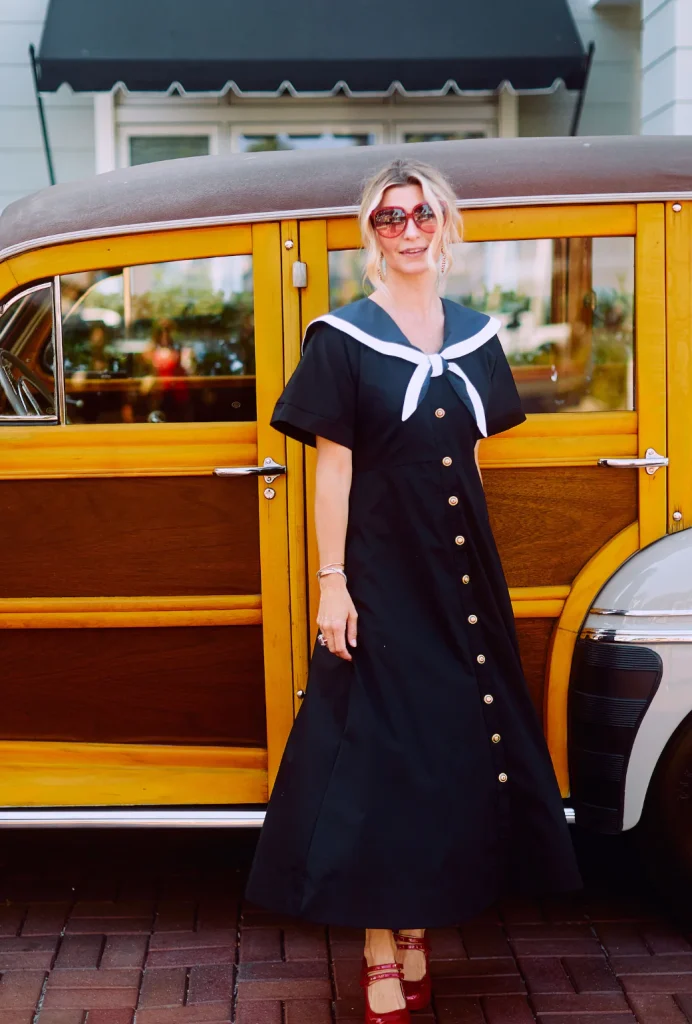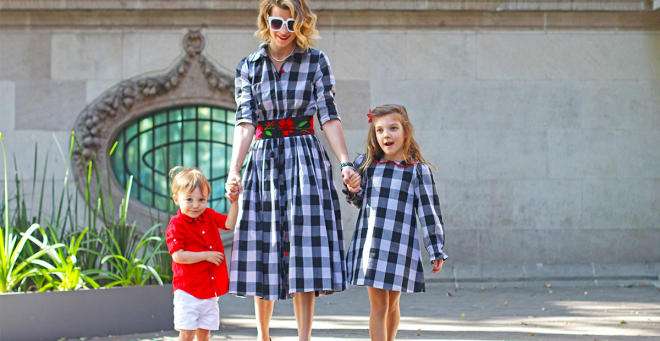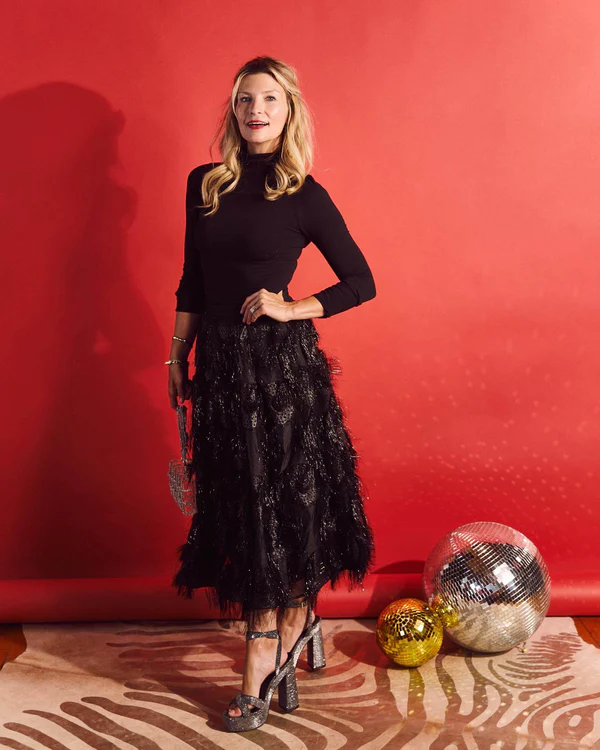Designer Morgan Hutchinson created Buru for the modern mother, but she’s also tackling another issue with her deadstock designs: fashion waste.
Upcycling has been labeled as one of the hottest trends in fashion for a few years now. Creating new clothes out of old materials has been embraced by luxury designers and even high-street brands. But taking something from the past and making it modern isn’t new. Before the birth of fast fashion, for decades, hand-me-down clothes were the norm in society. Daughters wore the clothes of their mothers, who had worn the clothes of their mothers, and so on.
Los Angeles-based label Buru has taken this idea and upcycled it. Everything is designed by the brand founder, Morgan Hutchinson, who takes inspiration from her mother and grandmother’s clothes (which she still has in her closet today). And in the spirit of make-do and mend, she creates everything using deadstock.
Embracing deadstock
Deadstock is, essentially, fabric that is unsellable. It might be damaged, out of season, or it might be that a factory order was rejected, or a new fabric was chosen by a buyer, leaving the old one without a home. Most textile factories end up with deadstock most of the time. But at Buru, Hutchinson gives these fabrics a future.

It’s an important mission. The fashion industry is incredibly wasteful, and every second, a truck full of textiles turns up at the landfill. It’s imperative that clothing brands do everything they can do to stop these pollutive trash pits — which leach toxins into the earth and release potent greenhouse gasses into the atmosphere — from getting worse.
Prioritizing motherhood
Hutchinson didn’t just take inspiration from her own mother and grandmother for Buru, she also takes inspiration from mothers all over the world. Her designs are made with some of the trickiest practical aspects of motherhood in mind, like breastfeeding, for example. It’s something she is acutely aware can be a problem when it comes to clothes. “A few weeks after having my daughter, she and I had a mutual meltdown at a restaurant when I couldn’t feed her while wearing a high-neck dress,” Hutchinson recalls.
And so shortly after that incident, Buru was born. But the brand is not just for mothers who breastfeed, it’s for anyone, regardless of their individual journey. We spoke with Hutchinson to find out more about Buru, her creative process, and why deadstock is important to the brand.
Ethos: Can you share the story behind Buru?
MH: In 2013, I had my first child – my daughter, Olive. Suddenly I needed easier access, more flexible ‘fits, and anything “dry clean only” was just waiting for a spill. Now, Every Buru piece is inspired by the clothes my grandmother and mom wore (and that I still have!), but they are designed for the life I lead today. We chose the name BURU because [my husband] Brett and I lived in China for a few years together and the name loosely translates to “to breastfeed” in Mandarin. We believe in supporting ALL mothers, no matter how they feed their babies, but we loved the pinyin (Chinese words in our alphabet) sound of the word and the undercurrent of motherhood that it represents.

Ethos: It’s great that you have kept your mother and grandmother’s pieces. Are there specific elements from your family’s fashion history that consistently find their way into Buru’s collections?
MH: You’ll find silhouettes like swing and car coats that feel a bit vintage, mod dresses that my mom wore, and classic shirtdresses that my grandmother favored.
Ethos: Other than taking inspiration from your family’s closet, can you walk us through the creative and production process from conception to the final product?
MH: I have a fabric-first approach, so my process always starts with finding bolts of deadstock fabric to inspire a silhouette. I then sketch the pieces in my notebook and pass them off to our production team to create samples. It’s incredible how this can all be done in one ambitious day because we own our own factory and keep our production team in-house. We hire and train local talent with a “fabric to fulfillment” model where styles are patterned, sampled, cut, sewn, and shipped under one roof.
Ethos: Why do you focus on deadstock fabric?
MH: Our domestic production exclusively uses deadstock textiles, vintage buttons, and trims in order to upcycle fabric and materials that would otherwise go to waste. We also cut-to-order which means that we only create what is needed to avoid creating extra inventory. We like to call this “slow fashion” — it’s the exact opposite of fast fashion’s negative impact.
Ethos: Looking ahead, what can we expect from Buru in terms of new collections or innovations?
MH: We have quite a few exciting collaborations coming in 2024, with women who we admire from the East to the West Coast, including a special launch for Mother’s Day, an occasion we are always excited to celebrate!
Related on Ethos:


